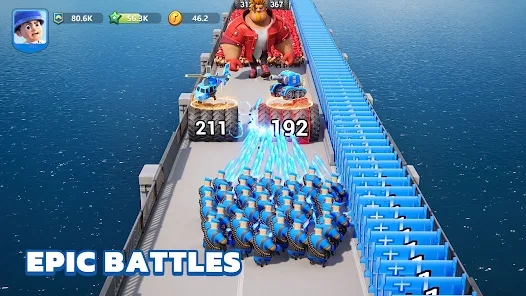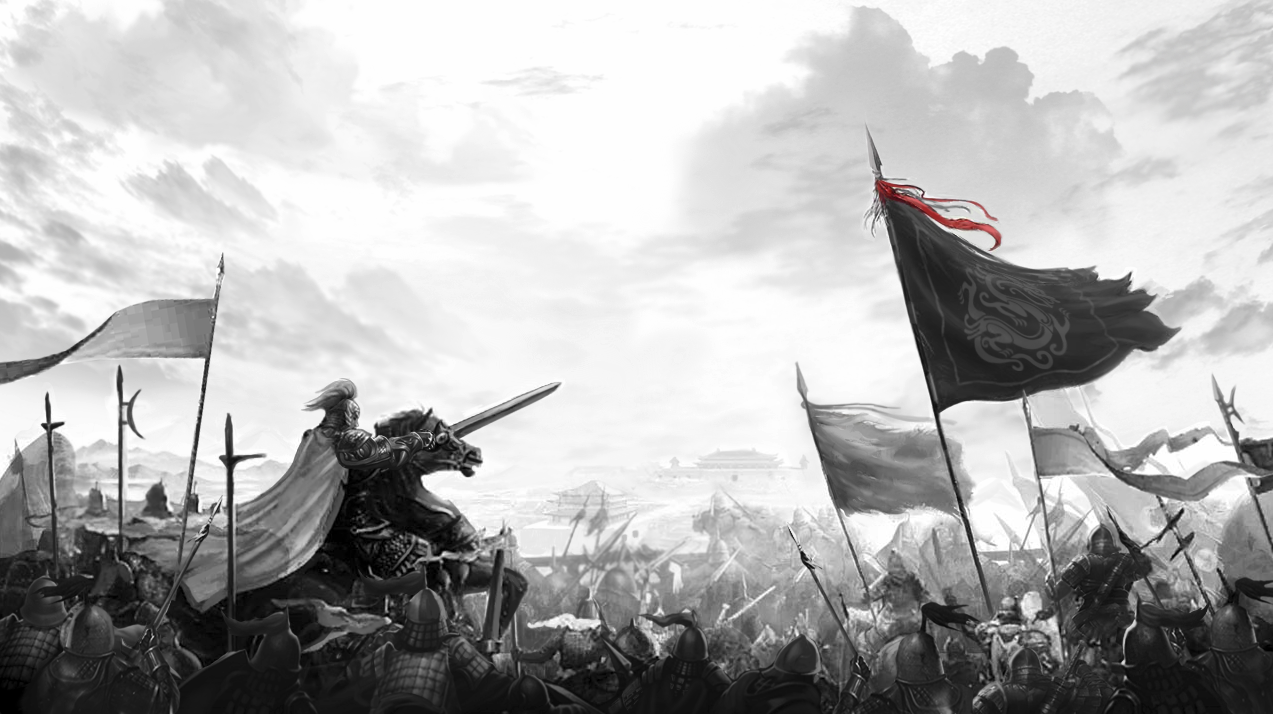Coop Games Strategy: Mastering Teamwork and Tactics for Ultimate Gameplay Success
In the evolving landscape of modern digital entertainment, strategic thinking has always been at the heart of successful gameplay experiences. While single-player games have held their own charm, coop games have rapidly surged in popularity, not just among casual gamers but also within competitive circles and even ASMR cardio gamer subcultures. This comprehensive guide will dive deep into building a robust approach to cooperative strategic gameplay, while also touching on unexpected but fascinating elements like how flavor choices—such as spice combinations—can oddly mimic collaborative player behavior online.
The Rise of Coop Games and Strategic Complexity
Cooperative gameplay—or as it’s more casually known, coop—is not exactly a recent innovation in gaming, but its sophistication has dramatically escalated. No longer are these simple "run-through-level" team-ups; nowadays, most **coop strategy games** demand real planning, division of skills, adaptive communication patterns—even micro-decisions that can change an entire session’s outcome.
- Battlefield logistics with 3-5 teammates
- Diving mechanics requiring precise role execution in dungeon crawlers
- Ambush-based survival where only coordination means success
This trend has created a hybrid demographic: the ASMR Cardio Gamer crowd—a niche, passionate community often drawn to rhythm-heavy challenges combined with ambient sensory stimulations—and those craving deep tactical cooperation, even from thousands of miles apart online.
|
|
|
|---|---|
| Strat Coordination | Taking turns to lead depending on in-game events. |
| Real-time Decision Trees | Frequently reassessing goals and re-planning moves under time pressure or shifting threats. |
| Roles Flexibility | No rigid assignments—you adapt mid-mission. |
Team Synergy Is More Than “Just Talking Together"
A lot of players mistakenly think cooperative play is limited to calling enemies’ locations or assigning weapon types via voice comms. However, elite teams don’t treat teamwork as just shouting alerts—they treat the whole operation as if their brains were merged together during a live action sequence. That’s especially common in high-risk multiplayer maps found in top-tier PC and console strategy-oriented teamplay scenarios.

To reach higher synergy, players should aim to do much more than follow leader instructions.
Tiered Skills to Focus On In Strategy-Based Team Gameplay- Map awareness beyond line of sight
- Distributed load handling across all characters/class setups
- Natural timing between individual movements—what many now refer to as ‘gaming flowstate’ syncing.
Predictive Thinking: Seeing Around Corners in Tactical Situations
One standout feature in truly skilled coop sessions is anticipatory control: predicting not just how others may react but what unseen threats might exist around the level's next curve. Some veterans even argue this form of predictive anticipation borders on subconscious muscle-memory built over hundreds of repeated plays.
- ASEBS: Anticipating enemy spawn positions even when data-driven analysis tools fall short.
- Cross-character awareness, i.e., watching for your teammate’s blindside without being asked
- Mirroring movement tempo with others—no lag or rushed steps causing disruptions
How Role Division Affects Strategy Performance
You’ll want to avoid generic groupings where everyone picks similar abilities—thereby creating bottlenecks. Smart divisions mean covering multiple gameplay bases simultaneously.
Take classic three-part structure for dungeon-based RPG team structures. Each person plays one of these roles:
| Player Type | Main Responsibility | Gear Setup Style Preference |
|---|---|---|
| Tank-style Player | Drawing aggro, surviving long-term damage | Built-in health buffers, defensive mods prioritized |
| Burst Damage Specialist | Focusing key targets before defense collapses team | High attack DPS builds |
| Control Class | Tethering mobs to delay attacks and re-position squads faster | Area lockdown items like chain stuns preferred over direct offense |
Note here the balance isn't just about damage ratios. It's more about flow management in a fast-changing battlefield space, particularly when map design intentionally pushes chaos.
Cheaters Never Prosper: Why Integrity Enhances Realistic Tactics Training
The irony of cheating—or at least attempting to use exploits in serious gameplay training environments—can backfire terribly. Even using small unfair tactics like unpatched bugs gives you a false sense of security and reduces skill improvement rates drastically in co-op settings, where partner performance relies on predictability as part of team cohesion mechanics.
Effects of Improper Use Cases on Strategy Game Development Curve- Stalls natural growth curve
- Causes mismatch in skill level during random group matches
- Hinders genuine feedback for developers on what mechanics need adjusting
- Makes post-round analytics nearly useless for self-evaluation or peer comparisons
Variety in Difficulty Settings Builds Adaptable Minds—Why Easy Should Still Scares You!
In any game, the difficulty spectrum matters far beyond bragging rights or completion trophies. If easy mode becomes too comfortable—where players stop adapting—weaken long-term reflexes needed later at higher levels. For some genres—real-time resource allocation-based strategy puzzles included—going easy early on actually hurts progress by creating artificial complacency barriers in neural wiring associated with high-response speed demands of intense gameplay stages further in campaigns
Smart Tip: Don't skip challenge settings below 'advanced'. It keeps your brain agile, which mirrors aspects we’ll touch later regarding the psychological similarities found between culinary decision-making and virtual combat coordination alike...
What Do Potato Salad Seasoning Choices Reveal About Strategic Group Dynamics Online?
A strange—but compelling comparison emerges: flavor layer complexity in recipes parallels advanced team coordination in strategic gaming setups. Much like selecting what spices go well with potato salad, building optimal strategies comes down to balancing boldness, nuance, and avoiding clashing elements.- Oregano: Adds earthiness akin to defensive character builds—use moderately.
- Dill: Bright but not overly aggressive—like flanking classes in open environments, they surprise when needed but aren't dominant.
- Salt and pepper combo: The baseline duo no serious team (or plate) ever goes without
- Sugar?: A risky but possible element that throws everything off unless balanced
Communication Overkill Or Necessary Chaos Control?
While raw instinct sometimes wins battles, long missions won't tolerate noise over signal: The Pitfall of Over-Chattering in Coords & Combat:- Kneejerky mic abuse
- Premature calls leading team into trap spots
- Muting mid-play instead of pre-discussion rules enforcement
- Excess pinging that gets lost
- Inability to read non-verbal cues (mimics chat delays in fast-paces titles where visual signaling becomes paramount.)
Beware Passive Play in Active Scenarios
Prolonged passive observation can be worse than reckless aggression. It erodes group cohesion, creates deadspace zones both mentally and visually in map awareness, ultimately lowering engagement for both player and teammates:- Lingers on objective point waiting for reinforcement instead charging out
- Switch focus every few moments—attention span drift mimics multi-tab browser browsing in work setting
- Talk excessively but move rarely
Creating Custom Maps for Unique Team Challenges
The modder community is one reason strategy team games maintain their shelf life for years on end.
Here's why:- They allow customizing environmental complexity
- Offer opportunities for asymmetric warfare dynamics between factions in team setup
- Possibly add entirely new variables (enemy wave scaling based on real performance)
- Prompt fresh conversations on old team roles (“Hey maybe Tank works here more effectively?" vs traditional roles)
 Modders create immersive alternate battleground layouts with varying difficulty factors embedded into terrain and spawning logic
Modders create immersive alternate battleground layouts with varying difficulty factors embedded into terrain and spawning logicFinding Quality Map Files to Introduce To Your Clan?
Use sites offering tested map packages sorted by compatibility tags:
- r/PCmasterRace for community-tested ones
- Fanbases on Itch.IO that test unique mechanics first-hand
- Verified creators on Steam Mod DB
- Discord server file repositories (just watch licensing rules per game!)
Burnout Warning Signs Every Coordinated Coop Team Needs to Notice
Like all creative or intensive processes: Gaming teams face burnouts far sooner than expected, if stress thresholds aren’t watched. Some signs include:- Late night playing sessions that eat rest hours necessary for real world tasks
- Increased argument tone unrelated to actual gameplay stakes
- Skip match phases frequently due lack energy rather than skill
- Rapid quitting mid-run, ignoring call-ins for assistance
- Mute usage increasing during high-action moments
-
If morale declines despite good rank position—it may be worth a cooldown week or a total meta change (trying something less tactical). Yes — trying silly games purely for laughter counts too.
The Psychology Behind Gaming Flow States During Coordinated Missions
Many top-performing gamers report entering 'zone' states—common called gaming hyperfocus—in certain modes: Conditions favor such immersion tend to revolve on:- A tight loop of input-response-reaction cycles
- Uninterrupted progression paths in game sequences lasting at least ~45 minutes straight (longer sustained flow period = better chance to slip deeper)
- No significant technical lags causing micro-frustration loops in brain chemistry
Beyond Mechanics – Building Long Term Team Cohesion Through Shared Progress Tracking
If your group treats games seriously enough for consistent weekly practice, consider tracking stats not only per player, but across rounds collectively:| Common Stat Metrics Used Across Multiplayer Strategy Clans | |
|---|---|
| Average Round Duration | Mechanically reveals whether team tends towards quick bursts or methodological, patient play. |
| Team K/D Ratios Per Session | Note if decline happens during weekends—might correlate w/ outside factors (alcohol consumption? Late nights?). Adjust scheduling accordingly. |
| New Member Integration Rates | Tracks if adding someone boosts or slows group efficiency |
Diversity Matters: Cross-Pollinate Strategies Between Subgenres
Some teams plateau simply because they stick religiously to same titles. Here's something radical: Try swapping a core title once every quarter—try a different sub-genre altogether. This does wonders toward developing versatile problem-solving reflexes and opens new avenues back in main titles. Example: Transitioning from FPS-focused coop shooters like Rainbow Six into narrative-heavy puzzle adventures like Backbone or indie roguelikes with heavy coexistence dynamics, suddenly opens mindsets on how to plan ambushes, hide behind decoys, and distribute limited-use abilities efficiently—which surprisingly applies back into high-difficulty campaign segments where conservation becomes key to finishing strong. Also—this is where our earlier analogy circles back around:-
Mixing spices requires openness, intuition... And so do experimenting with novel team formations! Both rely on risk acceptance for richer reward later 🌶



